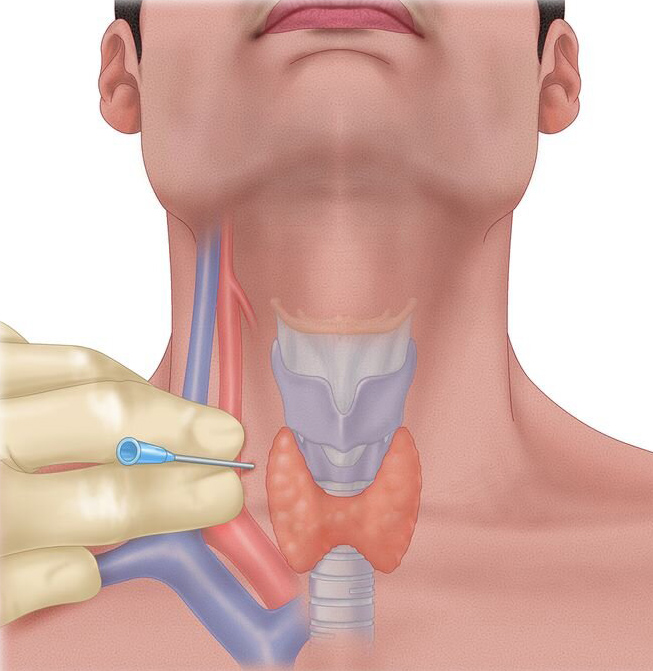
The use of stellate ganglion block in the treatment of mental disorders, in particular post-traumatic stress disorder (PTSD) and depression, is one of the newest innovative techniques that is attracting the attention of the medical world. This method is used to reduce the activity of the sympathetic nervous system, which is responsible for stress responses and mood regulation.
The stellate ganglion is a bundle of sympathetic nerves located at the front of the neck near the first ribs (those ribs are just below the collarbones). A ganglion is a collection of nerves, we have one on each side of the neck. The stellate ganglion is oval in shape, but can also look like a star.
The stellate ganglion provides most of the sympathetic nerve signals to the head, neck, arms, and part of the upper chest. Our sympathetic nervous system is part of the autonomic nervous system. It is responsible for many functions that the body controls in automatic mode. This may include monitoring heart rate, blood pressure, sweating, and other functions.
Usually, blockade of the stellate node is used in anesthesiology to reduce pain in the neck, head and upper limbs. The procedure is performed by injecting a medicine such as lidocaine into the region of the stellate ganglion, located at the front of the neck. The injection can help relieve pain in the head, neck, shoulder, and chest. It can also help improve circulation and blood flow to the hand. However, over time, scientists have drawn attention to the possibility of using this technique for the treatment of mental disorders. Traditional methods of treatment, such as psychotherapy and pharmacotherapy, help many, but do not always bring the desired result. Therefore, in search of new treatment approaches, the medical community began to pay attention to the possible psychiatric benefits of this procedure. Relevant studies have shown that reducing the activity of the sympathetic nervous system can have a positive effect on the condition of patients with mental disorders.
In particular, there are studies demonstrating the effectiveness of blockade of the stellate node in the treatment of PTSD. Post-traumatic stress disorder can be the result of acute and traumatic events in a person's life, such as accidents, war, sexual or physical crimes, violence or loss of loved ones. People who experience these disorders often have high levels of stress, anxiety, and depression, which significantly impairs their quality of life and functioning. The use of a stellate block helps to reduce the level of anxiety and hyperexcitability that are typical symptoms of PTSD. In addition, such a method can improve sleep quality and general mood in patients with this disorder.
Also, blockade of the stellate node can be useful in the treatment of depression. Depression is a serious mental disorder that affects mood, emotional state and general interest in life. With the help of this procedure, it is possible to reduce the activity of the sympathetic system, which helps to reduce the level of stress and anxiety. Combining stellate block with our other depression treatments, such as psychotherapy, ketamine therapy, transcranial electrical brain stimulation, and vagus nerve stimulation, can help increase treatment effectiveness and reduce recovery time.
In the future, with additional research, we can expect further positive developments in the treatment of mental disorders, which will help patients with PTSD and depression to improve their quality of life and return to an active and healthy way of life.
